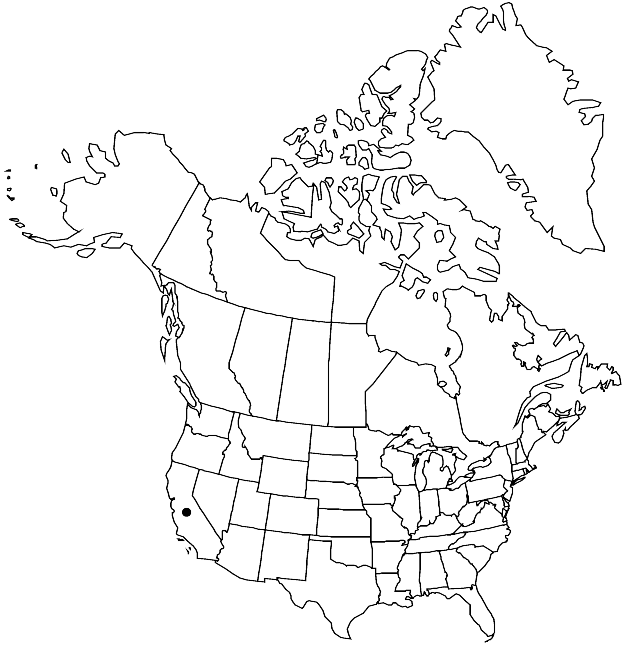Streptanthus drepanoides
Madroño 30: 230, figs. 1, 2b. 1983.
Annuals; (glaucous), usually glabrous, (sometimes sepals pubescent). Stems unbranched or divaricately branched basally, 0.4–3.5 (–4.5) dm. Basal leaves (soon withered); not rosulate; subsessile or shortly petiolate; blade orbicular, similar to cauline, margins with blunt teeth. Cauline leaves: blade (succulent), orbicular or orbicular-ovate, 1.3–9 cm × 10–75 mm (smaller distally), base auriculate-cordate, strongly overlapping, margins entire or shallowly dentate. Racemes ebracteate, (dense). Fruiting pedicels divaricate-ascending, (straight), 1.5–4 mm. Flowers: calyx urceolate; sepals greenish yellow, (ovate), 5–7 mm, keeled, (apex reflexed, glabrous or pilose); petals ochroleucous (with brownish purple veins), 7–10 mm, blade 2–3 × 1–1.5 mm, margins crisped, claw 5–7 mm, wider than blade, (apex recurved); stamens in 3 unequal pairs; filaments: abaxial pair (connate to middle), 5–6 mm, lateral pair 3–4 mm, adaxial pair (connate to apex), 8–10 mm; anthers: abaxial and lateral pairs fertile, 1.8–2.5 mm, adaxial pair sterile, 0.7–1 mm; gynophore 0.5–1 mm. Fruits divaricate-ascending, usually smooth, rarely slightly torulose, strongly falcate, slightly flattened, 3–9 cm × 1–1.2 mm; valves each with obscure midvein; replum straight; ovules 30–50 per ovary; style 0.5–1 mm; stigma entire. Seeds oblong, 1–1.5 × 0.7–1 mm; wing 0–0.1 mm wide, distal. 2n = 28.
Phenology: Flowering May–Jul.
Habitat: Steep mobile substrate on sedimentary or volcanic slopes, usually on serpentine outcrops, openings in chaparral, pine woodland
Elevation: 200-1800 m
Discussion
Streptanthus drepanoides is distributed in Butte, Colusa, Glenn, Shasta, Tehama, and Trinity counties.
Selected References
None.
Lower Taxa
"elongated" is not a number."thick" is not a number."dm" is not declared as a valid unit of measurement for this property."dm" is not declared as a valid unit of measurement for this property.
